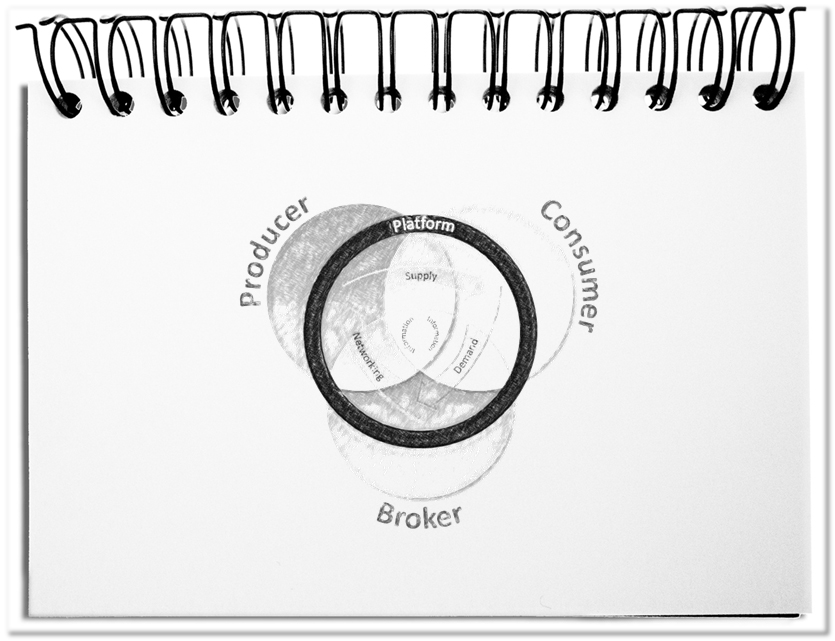People tell a story about Pablo Picasso from his time in Paris. When he was dining in a restaurant, a woman asked him for a sketch. In return, he could set any price, and she would pay. Picasso sketched something on a napkin, signed it, and said, “That’ll be $10,000.” Surprised, the woman raised her eyebrows, “But it only took thirty seconds.”. “No,” replied Picasso, “it took me forty years.” This is the creative added value that only evolves over time and is usually ignored when a result gets evaluated.
Doesn’t that happen to you every day at work. On the one hand, employers want to use their human resources with all their skills. On the other hand, employees wish to be rewarded adequately. Since a job usually consists of tasks, authorities, and responsibilities, which are independent of the person, the required skills are taken for granted, if they are noted at all. How can we factor in actual knowledge, existing skills, and experiences?
- Recognizing
With a mechanistic worldview, involved people assume that knowledge and skills are documented as credentials. Yet, these snapshots do not tell anything about the retrievable capabilities. Acquired knowledge is losing its value faster and faster due to accelerated progress – starting with the latest version of MS Office and moving on to internal DIY booking systems and entirely new applications that replace long-standing practices. Specific enablers, such as collaboration, leadership, and change competencies, as well as several years of professional practice, can only be measured indirectly and require a particular intuition to recognize these additional contributions. The agile enterprise will replace existing job descriptions with profiles of projects and people in the near future. In any case, employees should regularly become aware of their current opportunities and use them in their activities. Leaders have the duty of promoting the existing means and making them usable for the company. Skill profiles provide the basis for matching people and tasks. - Applying
Individuals use their full set of abilities unconsciously. Thereby, they forget to utilize the above Picasso effect for themselves. For this purpose, the creative added value provided should run as an additional contribution to the personal assessment, or even the descriptions of a job should be upgraded. It does not fit performance orientation to pay the High-Performer just as little as the Low-Performer. In addition to recognizing the added value, the application in a company requires the fostering and skillful allocation of the additional skills. As more and more tasks are project-based, generic capability profiles are needed. They are used to profile the task roles as well as to describe the people. By matching them, e.g., with HCM software, the most suitable personalities can be assigned to a task. The extendable employee profiles can be used for a long time, and the needs-oriented project profiles will replace the time-consuming job descriptions in the medium term. - Honoring
When various people perform a task, they differ due to the execution period (start/end and time spent), commitment, quality, and results. Simple activities, such as writing a report, may take one person a few days and another some weeks. In the first case, a finalized printable and in the other case, an unfinished version to be revised are delivered. In the end, the first person produces many more results than the other – for the same pay. As soon as the hardworking notice this, they will adjust their work pace to match the worst. Unless: they are rewarded for their better performance. - Integrating
The requirements should not only be derived from a technical matter but also the additional capabilities – e.g., cross-functional knowledge concerning the business, mutual understanding as well as coordinating and leading diverse personalities. The mastery of the new VUCA world with the help of holistic and critical thinking as well as practical changeability complete the creative added value. As requirements are in permanent transition, profiles must be able to incorporate the latest skills on time. In HR, it is no longer enough to maintain a template for the job description. Changing skill profiles must be elaborated on a company-by-company basis and made available to all participants.
Bottom line: As companies are phasing out lifetime employment in favor of outsourcing and temporary employment, applicants will also have to adapt to the new hire-and-fire mode and become more adept at selling their added value. In the spirit of Picasso, it will no longer be enough to be paid for the timely length of a deliverable, but also to include in the calculation the additional soft components that go far beyond the technical exams performed. This applies equally to technical, methodological, social, and systems competencies. Just as companies adjust their pay according to supply and demand, so must the “providers”. In the best case, companies will realize that with this bidding war, they will lose money since cheap labor provides related services, which destroys their reputation. All parties involved must recognize, use, honor, and integrate them into day-to-day business for skills to be considered. Above all, the creative added value results from ongoing routine, practical experience, and the employees’ passion that makes the difference, and that must be factored in the assessment. Those who do not master this view of creative added value will fail in the short to medium term.


